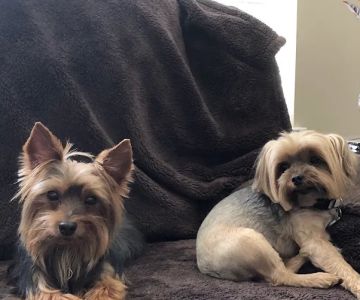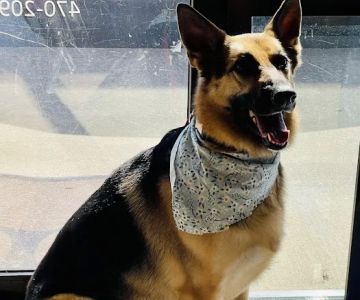How to Train a Dog to Be Comfortable with Grooming
As a dog owner, one of the challenges I faced early on was helping my dog get comfortable with grooming. I knew that regular grooming is essential for my dog’s health and well-being, but I also understood that it can be stressful for both dogs and their owners. Over time, I learned several techniques and strategies to make grooming a more enjoyable experience. If you’re in the same boat, let me share what I’ve learned about training a dog to be comfortable with grooming.
1. Understanding Why Dogs Are Hesitant About Grooming
Before diving into the training process, it's crucial to understand why many dogs are hesitant when it comes to grooming. For some dogs, grooming can feel like a threatening or unfamiliar experience. The loud noises from clippers, the feeling of brushes, and the physical handling can overwhelm them. I noticed that my dog, like many others, didn’t enjoy being touched in sensitive areas, such as around the paws, ears, or tail. Recognizing this made me realize the importance of being patient and gentle during the grooming process.
1.1 The Importance of Positive Associations
One of the first things I learned was that dogs respond best to positive reinforcement. If a dog has a negative experience with grooming, they are likely to develop an aversion to it. This is why I focused on creating positive associations with grooming activities. At first, I would reward my dog with treats and praise immediately after every gentle grooming session. This not only helped my dog associate grooming with something pleasant but also encouraged a calm and relaxed attitude.
2. Start Slowly with Simple Grooming Techniques
When I first started training my dog for grooming, I knew that the key to success was to start small and gradually build up the experience. I didn’t want to overwhelm my dog with a full grooming session right away, so I broke it down into manageable steps. This process made a big difference in reducing my dog’s anxiety. For example, I began by gently brushing my dog’s coat for just a few minutes at a time, ensuring that I kept things positive by offering lots of praise.
2.1 Introducing the Tools Gradually
One of the mistakes I initially made was rushing to use the grooming tools. Clipping nails, brushing, and using other grooming tools can make some dogs anxious if they are not familiar with them. I began by introducing the grooming tools in a non-threatening way. I would leave the brush or clippers near my dog’s bed or in a place where they could see them, allowing them to get used to the sight and smell of these items without immediately using them. This helped my dog to build tolerance and reduced fear of the tools.
2.2 Desensitization and Training
Another important technique I used was desensitization. This involves exposing your dog to grooming tools and activities slowly, starting with low-stress situations and gradually increasing the intensity. For example, I would start by touching my dog’s paws gently and rewarding them with a treat. Over time, this led to my dog becoming more comfortable with paw handling, which is often one of the more sensitive areas. The goal was to make each step feel safe and rewarding for my dog.
3. Keeping Grooming Sessions Short and Positive
At the beginning of our grooming training, I found that keeping sessions short was essential for my dog’s comfort. I started with just a few minutes of brushing or nail clipping, gradually increasing the duration as my dog became more comfortable. If I noticed any signs of stress, such as panting or trying to escape, I would take a break and give my dog a chance to relax before continuing. Keeping grooming sessions positive and not forcing my dog to endure long periods of grooming helped prevent negative associations.
3.1 Using Treats as Motivation
Treats were an essential tool in making the grooming process enjoyable. After each successful grooming session, I would reward my dog with a favorite treat. This reinforced the idea that grooming is a positive experience. Over time, my dog began to look forward to grooming sessions because they knew a treat would be waiting for them at the end. Using treats as motivation is one of the most effective ways to help a dog learn to enjoy grooming.
4. Gradually Introduce New Grooming Techniques
Once my dog became comfortable with basic grooming, I started introducing more advanced techniques, such as ear cleaning, teeth brushing, and full body trims. I took it slow and introduced one new technique at a time, making sure to keep the sessions short and positive. The key was to remain patient and understand that each dog has its own pace. My dog didn’t suddenly become a grooming expert overnight, but with consistent practice, I noticed that grooming became easier for both of us.
4.1 Consider Professional Groomers for Help
While home grooming is a great way to bond with your dog and teach them to enjoy the process, there may come a time when you need professional help. If your dog becomes very anxious or aggressive during grooming, it may be helpful to consult a professional groomer. I found that professional groomers often have experience handling anxious dogs and can provide tips on improving your dog’s grooming experience at home. Some groomers may also offer behavioral sessions to address grooming-related fears.
5. Signs Your Dog Is Comfortable with Grooming
Over time, I began to notice several signs that my dog was becoming comfortable with grooming. My dog would stay calm and relaxed during grooming sessions, wag their tail, and even fall asleep while I brushed them. These are positive signs that my dog was no longer afraid of the grooming process. It took time and patience, but seeing the progress was incredibly rewarding. Recognizing these signs of comfort helped me know when my dog was ready for longer grooming sessions or new techniques.
5.1 Watching for Signs of Stress
Of course, there were also times when I needed to be mindful of signs of stress. If my dog started showing signs of anxiety, such as whimpering, pulling away, or licking excessively, I would stop and give them a break. It’s important to understand your dog’s body language and never push them beyond their comfort zone. Gradually increasing the intensity of grooming over time is essential to success.











